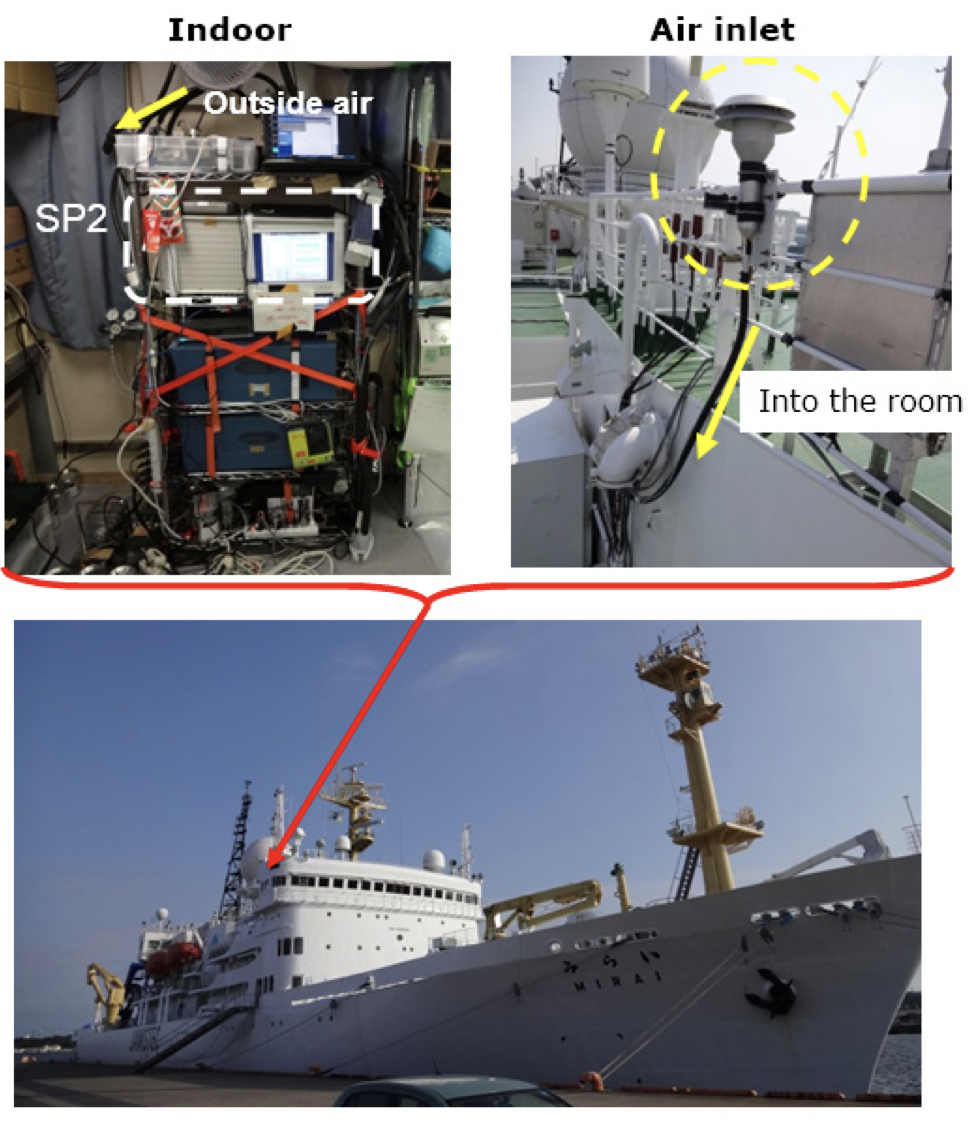3. Ship-borne observations
Since 2010, we have been conducting ship-borne observations of black carbon, ozone, CO, aerosols, etc. on R/V Mirai and obtained unique data set of atmospheric composition over the Pacific, Bering Sea/Arctic, and Indian Ocean, including over the southern hemisphere. A recent highlight is that using a highly sensitive SP2 instrument, we succeeded in world's first ship-based observations of atmospheric black carbon particles over the Arctic Ocean, during MR14-05 cruise. The BC mass concentrations over the Arctic Ocean ranged from 0.1 to 10 ng/m3. Further observation data will continue to be accumulated while these data will be utilized for climate prediction with atmospheric chemical transport models. Elucidation of long-term BC dynamics in the Arctic should also help clarify the Earth's radiative budget and transport process of BC. Besides BC, ozone data will be used to explore missing loss process related to halogen chemistry. Recently, other research vessels (Kaimei, Shinsei) are also used for observations of atmospheric composition.

More information
- Press release, February 2016
- Taketani, F. et al. (2016): Ship-borne observations of atmospheric black carbon aerosol particles over the Arctic Ocean, Bering Sea, and North Pacific Ocean during September 2014, J. Geophys. Res. Atmos., 121, 1914–1921, doi:10.1002/2015JD023648.
- Takashima, H. et al. (2012): NO2 observations over the western Pacific and Indian Ocean by MAX-DOAS on Kaiyo, a Japanese research vessel, Atmos. Meas. Tech., 5, 2351-2360, doi:10.5194/amt-5-2351-2012, 2012.